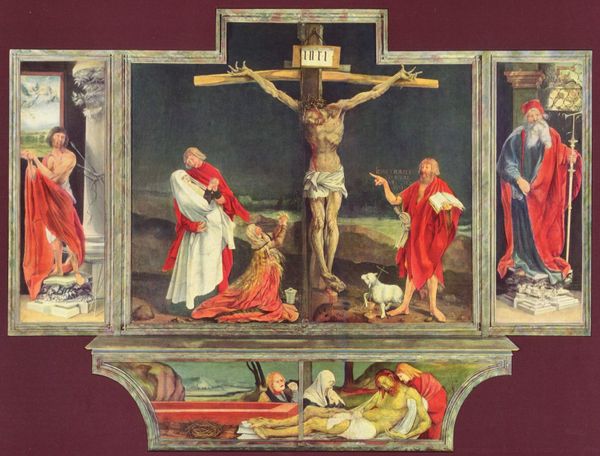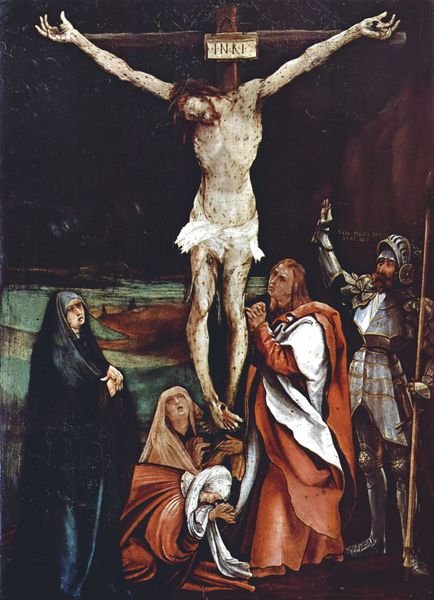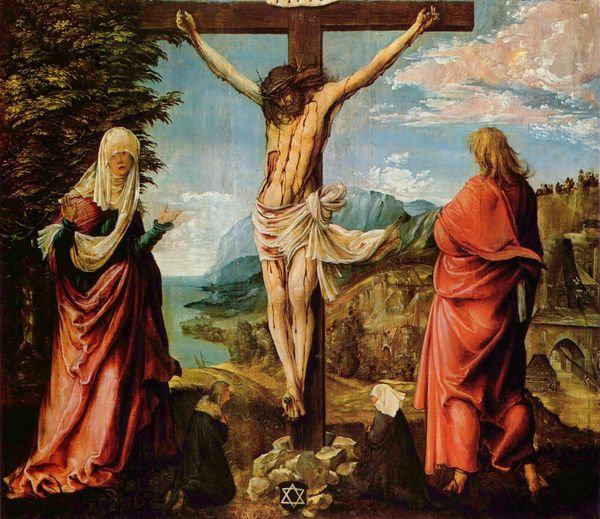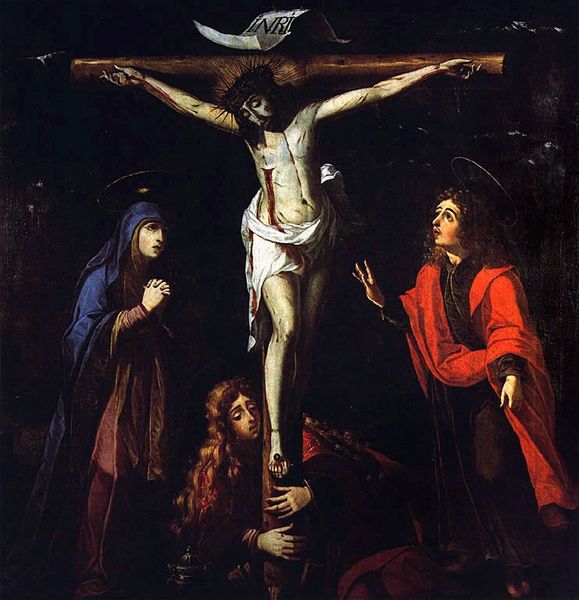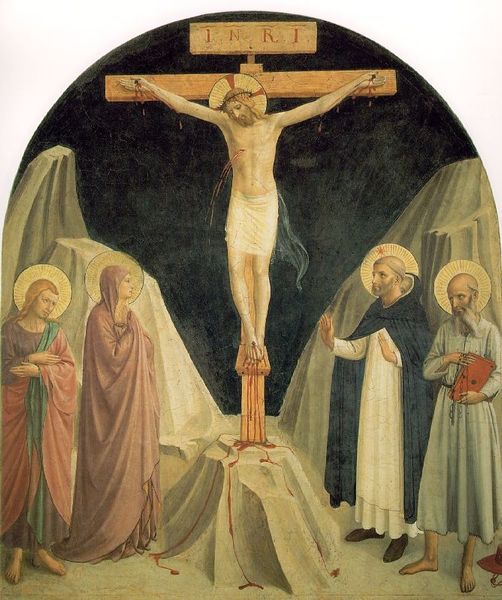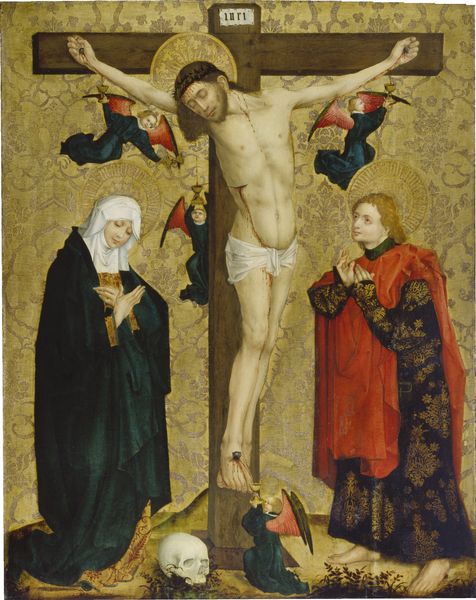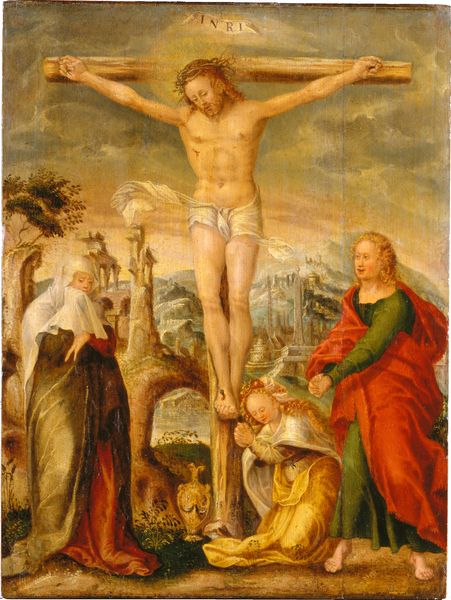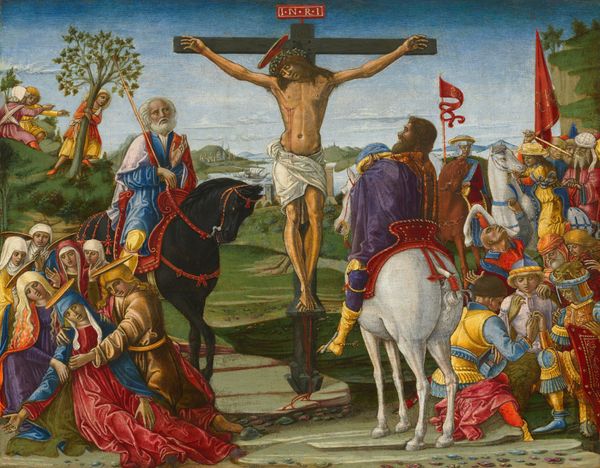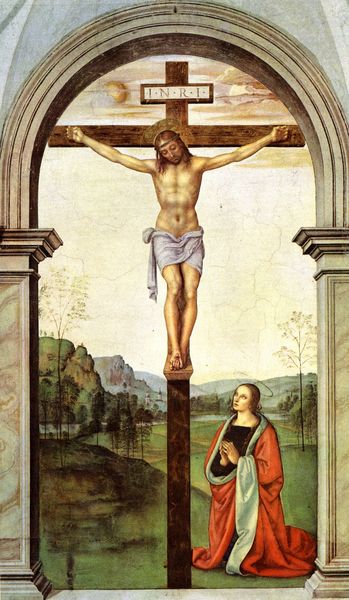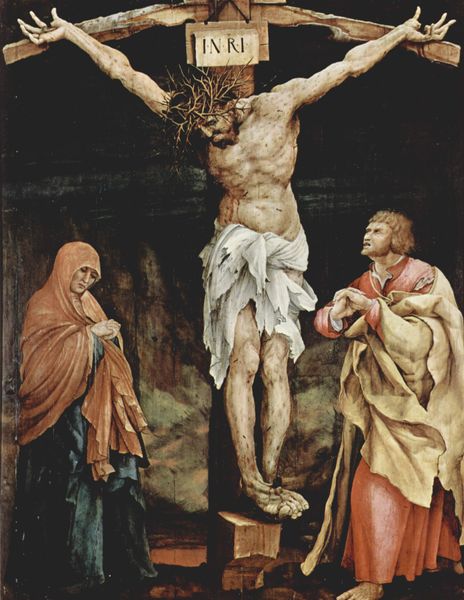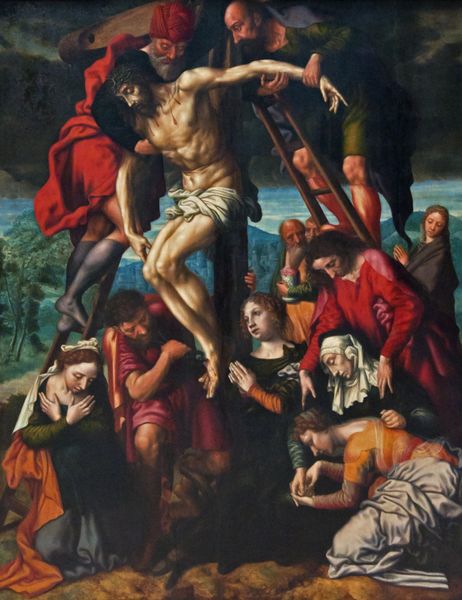
painting, oil-paint
#
painting
#
oil-paint
#
figuration
#
oil painting
#
jesus-christ
#
cross
#
christianity
#
crucifixion
#
history-painting
#
italian-renaissance
Dimensions: 307 x 269 cm
Copyright: Public domain
Curator: What strikes me immediately is the visceral, almost grotesque depiction of suffering. The figure on the cross is not idealized; it's a body ravaged, contorted in pain. Editor: That raw, unflinching portrayal is characteristic of Matthias Grünewald's "The Crucifixion," a detail from the Isenheim Altarpiece, painted around 1515. This oil painting, in its historical context, challenged conventions of religious art by highlighting human suffering. Curator: The distortion is significant. Limbs are elongated, and the skin is rendered with sickly greens and blues. What symbolic purpose do you believe that serves beyond conveying sheer agony? Editor: The green and blue tones, along with the darkness surrounding the figure, signify spiritual decay and the weight of human sin. Think about the patients suffering from skin diseases at the Isenheim hospital for whom the altarpiece was created. The lamb, typically a symbol of innocence, is positioned near the cross, perhaps representing a sacrificial element and offering hope. And what about Saint John the Baptist with his book? What symbols are in his teaching? Curator: Yes! His direct presence places this scene, this precise historical-theological point, as central to Christian understanding itself. The whole altarpiece and its display location aimed to speak directly to the patients in a profoundly intersectional way by showing suffering and pain and still indicating a means to healing and peace through God. Editor: Absolutely. Beyond its religious symbolism, this work has political and social undertones that make this piece unique from other similar artworks, despite being under the movement of the Italian Renaissance. Grünewald refuses to create the smooth polished figures for which the time was well known. Rather, this is the suffering and grief and the humanity behind everything it meant to feel hope back then. Curator: A powerful commentary on power and persecution, delivered through symbols of intense and confronting realism. This piece uses the well-known symbols but distorts them with elements of social issues. Editor: An unforgettable reminder that visual traditions constantly get repurposed to articulate new ideas.
Comments
No comments
Be the first to comment and join the conversation on the ultimate creative platform.
